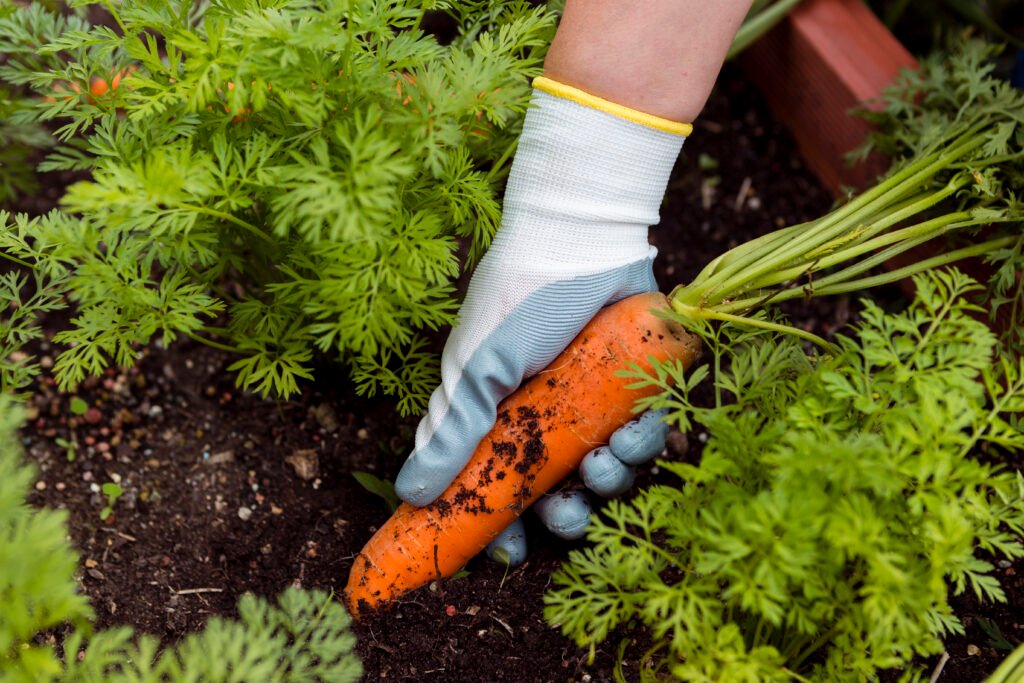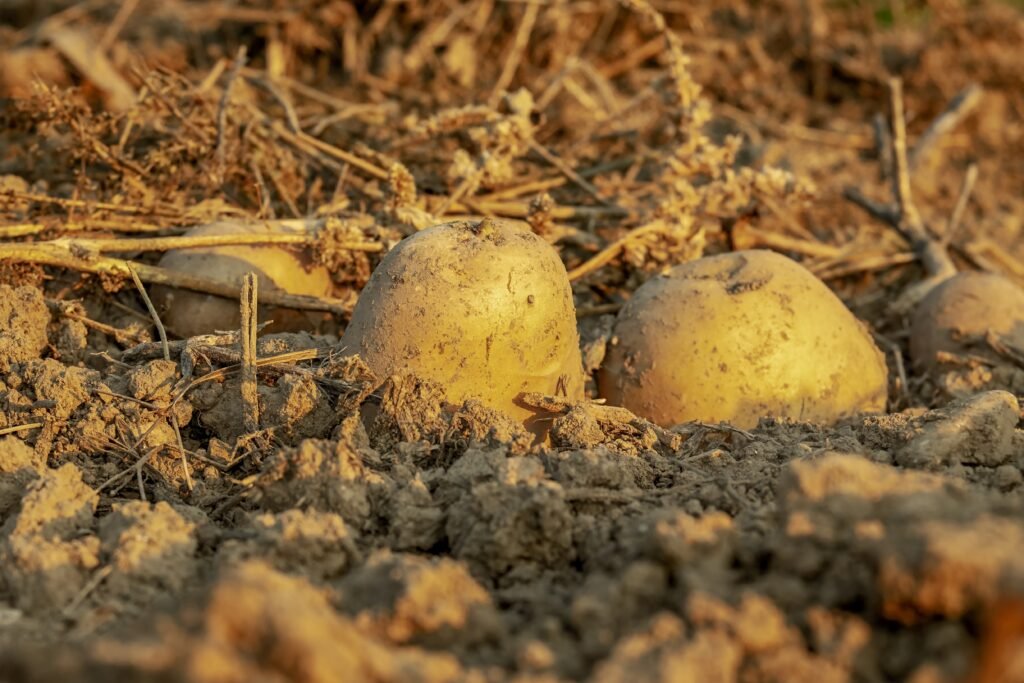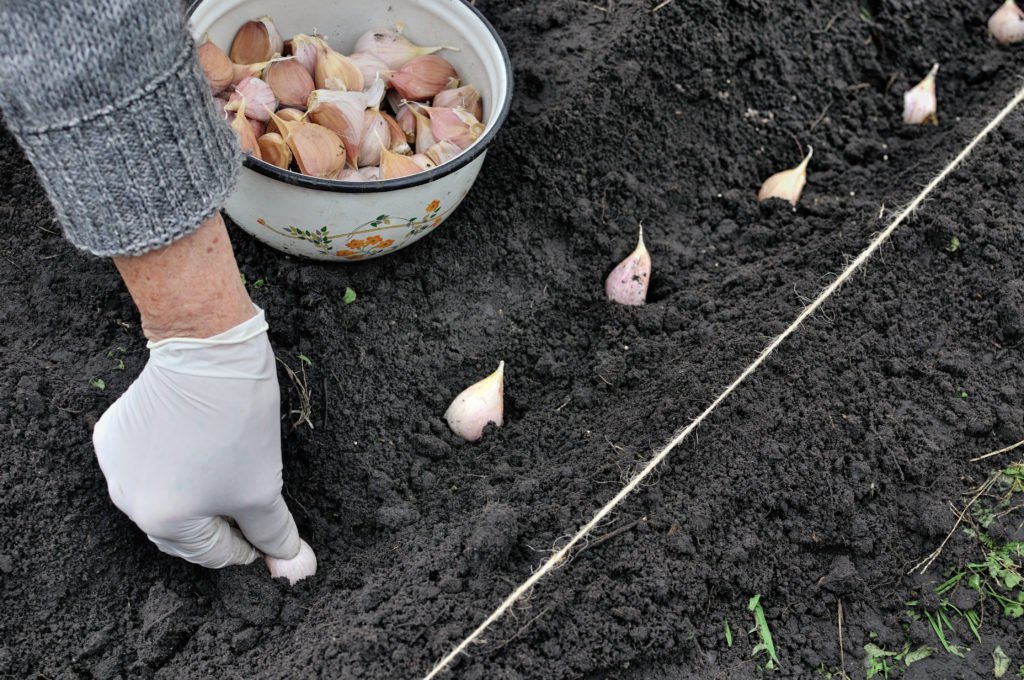The Ultimate Guide to Growing and Caring for Beauregard Sweet Potato Plants
To grow a Beauregard sweet potato plant, cut a sweet potato in half and suspend it in water. Once roots develop, transfer it to soil for growth.
Are you interested in growing your own sweet potato plant at home? Cultivating sweet potatoes is a rewarding and relatively easy process that can be done both indoors and outdoors. Not only do sweet potato plants produce delicious tubers, but they also make attractive ornamental plants with their lush foliage.
In this guide, we will explore the steps to successfully grow a sweet potato plant, from selecting the right sweet potato to caring for your plant as it matures. Let’s get started on your sweet potato growing journey!
The Beauregard Sweet Potato Plant: A Versatile Vine
The sweet potato plant is a versatile vine that can be grown easily with a few simple steps. To grow a sweet potato plant, start by selecting a healthy sweet potato and placing it in a jar of water. Within a few weeks, the sweet potato will sprout vines that can be transplanted to a pot or garden bed for continued growth and harvest.
Distinct Features Of Sweet Potato Plants
Sweet potatoes are a unique plant species that belong to the morning glory family. They are known for their vibrant orange flesh, but the plant itself has many distinct features. The sweet potato plant is a vine that can grow up to 10 feet long and has heart-shaped leaves that range from light green to purple. The plant’s stem is thick and sturdy, and it produces small white or purple flowers. One of the most unique features of the sweet potato plant is its ability to produce new plants from its vines. These vines can root in soil or water and produce new plants, making it easy to propagate sweet potatoes. (University of Florida IFAS Extension – Sweet Potato)
Why Choose Sweet Potatoes For Your Garden
Sweet potatoes are a great addition to any garden for several reasons. First, they are relatively easy to grow and require minimal maintenance. They are also very versatile and can be used in a variety of dishes, from sweet to savory. Another reason to choose sweet potatoes for your garden is their nutritional value. Sweet potatoes boast a rich content of fiber, along with vitamins A and C, as well as potassium. They are also low in calories and have a low glycemic index, making them a great option for people with diabetes or those looking to maintain a healthy weight. In addition, sweet potatoes are a great crop to grow if you have limited space. They can be grown in containers or raised beds and take up minimal space compared to other crops. Overall, the sweet potato plant is a versatile and unique addition to any garden. With its distinct features and nutritional value, it’s a great option for gardeners of all skill levels.
Choosing The Right Sweet Potato Variety (How to Plant Potatoes: Secrets to a Bountiful Harvest)
Growing sweet potatoes can be a rewarding experience, but it all starts with choosing the right variety. With so many different types of sweet potatoes available, it can be overwhelming to know where to start. However, by considering factors such as climate adaptability and flavor preferences, you can find the perfect variety to grow in your home garden.
Common Varieties For Home Gardeners
When it comes to sweet potato varieties, there are a few common options that are well-suited for home gardeners. Here are a few to consider:
Variety | Flavor Profile | Climate Adaptability |
|---|---|---|
Beauregard | Sweet and moist | Adaptable to various climates |
Jewel | Sweet and flavorful | Best suited for warmer climates |
Garnet | Sweet and nutty | Adaptable to various climates |
Beauregard is a popular choice among home gardeners due to its versatility and reliability. Jewel is another great option for those living in warmer climates, as it requires a longer growing season. Garnet is known for its distinctive flavor and adaptability.
Selecting For Flavor And Climate Adaptability
When selecting a sweet potato variety, it’s important to consider your climate as well as your flavor preferences. Some varieties, like Jewel, require a longer growing season and are better suited for warmer climates. Others, like Beauregard and Garnet, are more adaptable to various climates.
Additionally, different varieties have different flavor profiles. Some are sweeter and moister, while others have a nuttier flavor. Consider what type of dishes you plan to use your sweet potatoes in and choose a variety that will complement those flavors.
Overall, choosing the right sweet potato variety is key to a successful harvest. By considering factors such as climate adaptability and flavor preferences, you can find the perfect variety to grow in your home garden.
Getting Started: Sprouting Your Sweet Potatoes
Growing your own sweet potato plants can be a rewarding experience, and it all begins with sprouting your sweet potatoes. Whether you prefer the traditional toothpick method or the water submersion vs. soil sprouting technique, this guide will help you get started on your journey to growing a thriving sweet potato plant.
The Toothpick Method: A Traditional Approach
The toothpick method is a tried and true way to sprout sweet potatoes. Here’s how you can do it:
Select a healthy sweet potato that is free from any blemishes or soft spots. It’s best to choose an organic sweet potato to avoid any chemicals or pesticides.
Insert three to four toothpicks around the middle section of the sweet potato, making sure they are evenly spaced.
Place the sweet potato in a jar or glass filled with water, ensuring that the toothpicks suspend it partially in the water. The water should cover about one-third to one-half of the sweet potato.
Position the jar or glass in a warm spot with indirect sunlight. Make sure the room temperature is between 70-80°F (21-27°C) for optimal sprouting conditions.
Change the water every few days to prevent any mold or bacteria growth. Within a few weeks, you should start to see sprouts emerging from the sweet potato.
Once the sprouts reach around 4-6 inches in length, carefully twist them off the sweet potato. These sprouts can then be planted in soil to grow into individual sweet potato plants.
Water Submersion Vs. Soil Sprouting
Another approach to sprouting sweet potatoes is through water submersion or soil sprouting. Let’s explore the differences between these two approaches:
Water Submersion | Soil Sprouting |
|---|---|
1. Place the sweet potato in a container filled with water, similar to the toothpick method. | 1. Bury the sweet potato partially in a pot of moist soil, leaving the top exposed. |
2. Change the water every few days to maintain its freshness. | 2.Ensure the soil remains consistently moist without becoming overly saturated. |
3. Once sprouts appear, remove them from the sweet potato and transfer them to individual containers or plant them directly in the ground. | 3. Allow the sprouts to grow until they are around 4-6 inches in length before carefully separating them from the sweet potato. |
Both methods have their advantages, so choose the one that suits your preferences and available resources. Whichever method you choose, remember to give your sweet potato plants plenty of sunlight, water, and care as they grow.
Planting Sweet Potato Slips For Success
To successfully grow a sweet potato plant, start by selecting healthy sweet potato slips. These slips can be planted in well-draining soil, with plenty of sunlight and regular watering. With proper care and attention, your sweet potato plant will thrive and produce delicious sweet potatoes.
Planting sweet potato slips is an essential step in growing your own sweet potato plants. Whether you are a beginner or an experienced gardener, following the right techniques can greatly increase your chances of success. In this section, we will explore the crucial steps to prepare the soil for planting sweet potato slips and the optimal conditions required for their growth.
Preparing The Soil For Planting
Preparing the soil properly is key to providing a healthy environment for your sweet potato slips to thrive. Here are some steps to follow:
Choose a sunny location for your sweet potato patch as these plants require at least 6-8 hours of direct sunlight each day.
Clear the area of any weeds or grass, ensuring there is no competition for nutrients and space.
Loosen the soil using a garden fork or tiller, breaking up any clumps and improving drainage.
Amend the soil with organic matter such as compost or well-rotted manure to enrich its fertility and improve moisture retention.
It’s advisable to conduct a soil test to assess the pH level. Sweet potatoes prefer slightly acidic soil with a pH range of 5.8 to 6.2.
Optimal Conditions For Plant Growth
Creating the optimal conditions for your sweet potato plants is vital for their growth and productivity. Follow these guidelines:
Plant your sweet potato slips when the soil temperature reaches at least 60°F (15°C). This usually occurs after the last frost date in your area.
Plant each slip with a spacing of 12-18 inches between them, and maintain rows that are 3-4 feet apart. This allows enough room for the plants to spread and develop their tubers.
Ensure the slips are planted with at least two-thirds of their length buried in the soil. This helps promote the growth of robust root systems.
Water the newly planted slips thoroughly and maintain consistent moisture throughout the growing season. To prevent root rot, refrain from excessive watering.
Apply a layer of organic mulch around the plants to suppress weeds, conserve moisture, and regulate soil temperature.
By following these steps, you can ensure that your sweet potato slips have the best possible start and increase the chances of a bountiful harvest. Remember to monitor the plants regularly, provide proper care, and protect them from pests and diseases to enjoy the delicious rewards of your labor.
Caring For Your Sweet Potato Plants
Caring for your sweet potato plants is essential to ensure they thrive and produce a bountiful harvest. By understanding the specific care requirements, you can foster healthy and vigorous sweet potato vines that will reward you with a plentiful supply of nutritious tubers.
Watering Techniques For Thriving Vines
Proper watering is crucial for the growth and development of sweet potato plants. Consistent moisture is key, so ensure the soil remains damp but not waterlogged. Applying mulch around the plants aids in preserving moisture and inhibiting weed growth. During dry periods, provide deep watering to encourage strong root development.
The Role Of Fertilizers In Plant Health
Fertilizers play a vital role in ensuring the health and productivity of sweet potato plants. Organic fertilizers rich in potassium and phosphorus can promote robust vine growth and tuber formation. Applying a balanced fertilizer during planting and periodically throughout the growing season can enhance the overall health and yield of sweet potato plants.

Pest Management: Protecting Your Sweet Potato Vines
Protect your sweet potato vines from pests with effective pest management techniques. Keep the plants healthy by regularly inspecting for signs of infestation and using natural remedies like neem oil or insecticidal soap to control common pests. Attract beneficial insects such as ladybugs and lacewings to assist in controlling pests naturally.
Common Pests And Natural Predators
Sweet potato vines can be vulnerable to various pests. Some common pests include:
Wireworms
White grubs
Slugs and snails
Organic Solutions For Pest Control
Protect your sweet potato plants naturally with these organic solutions:
Introduce beneficial insects like ladybugs.
Use neem oil spray as a natural insect repellent.
Plant companion crops like marigolds to deter pests.
Harvesting Your Sweet Potatoes
To successfully grow a sweet potato plant, it’s crucial to know the right time for harvesting your sweet potatoes. Here’s a guide on how to harvest your sweet potatoes effectively:
Signs Of Maturity
Leaves turning yellow and starting to wither.
Stems beginning to dry out and die back.
Observing cracks in the soil surface near the plant.
Harvest Time
Harvest 3-4 weeks after the foliage has died back.
Best time is usually in late fall before the first frost.
Wait until the soil is dry before digging up the sweet potatoes.
Proper Techniques For Digging Up Tubers
Use a shovel or fork to carefully dig around the plant.
Start digging at least 12 inches away from the plant’s center.
Harvest gently to avoid damaging the sweet potatoes.
Post-harvest Care And Storage Tips
After harvesting sweet potatoes, proper care and storage are essential to maintain their freshness and flavor. Here are some crucial post-harvest tips to ensure your sweet potato plants last long:
Curing For Enhanced Sweetness
Curing sweet potatoes is crucial for developing their sweetness and improving their texture. Follow these steps for optimal results:
Keep harvested sweet potatoes in a warm, humid place for 10-14 days.
Ensure the curing area is well-ventilated to prevent mold growth.
During curing, the sweet potatoes’ skins will thicken, enhancing their flavor.
Ideal Storage Conditions For Longevity
Proper storage is key to extending the shelf life of your sweet potatoes. Follow these guidelines for optimal storage conditions:
Keep sweet potatoes in a cool, shaded area with adequate airflow.
Avoid refrigerating sweet potatoes, as it can negatively impact their taste and texture.
Check stored sweet potatoes regularly for any signs of rot or decay.
Common Challenges And Solutions
Dealing With Diseases And Rot
Sweet potato plants can be vulnerable to diseases and rot, which can hinder their growth. To tackle this issue:
To avoid the buildup of diseases, rotate the planting locations of your crops annually.
Avoid over-watering to prevent root rot.
Inspect plants regularly for signs of disease or rot.
Weather-related Concerns For Sweet Potato Plants
Weather conditions can impact sweet potato plants. Here’s how to address weather-related challenges:
Protect plants during frosts or cold snaps.
Ensure proper drainage to prevent waterlogged soil.
Provide shade during intense heat to avoid wilting.

Sweet Potato Vines In Containers
When it comes to growing sweet potato vines, containers can be a convenient and practical option. Whether you have limited outdoor space or simply want to keep your plants contained, cultivating sweet potato vines in containers is an excellent way to enjoy this versatile and nutritious crop.
Container Selection For Optimal Growth
Choosing the right container is crucial for the successful growth of sweet potato vines. Opt for a container that is at least 18 inches deep to accommodate the sprawling roots of the sweet potato plant. Additionally, ensure that the container has sufficient drainage holes to prevent waterlogging, which can lead to root rot. Consider using a large plastic or wooden container to provide ample room for the vines to spread and grow.
Balcony And Patio Gardening Tips
Position the containers in a location that receives at least 6-8 hours of sunlight per day to promote robust growth.
Water the sweet potato plants regularly, ensuring that the soil remains consistently moist but not waterlogged.
Utilize a trellis or support structure to encourage vertical growth and prevent the vines from sprawling uncontrollably.
Consider using a well-draining potting mix enriched with organic matter to provide essential nutrients for the plants.
Monitor the growth of the vines and prune them as needed to maintain a tidy and manageable appearance.
Cooking With Home-grown Sweet Potatoes
Once you have successfully grown your sweet potato plant and harvested your delicious tubers, it’s time to explore the culinary possibilities of these nutritious root vegetables. Cooking with home-grown sweet potatoes allows you to enjoy their fresh flavors and experiment with a variety of healthy and delicious recipes. In this section, we will explore some mouthwatering recipes as well as methods to preserve your sweet potato harvest for year-round use.
Healthy And Delicious Sweet Potato Recipes
Sweet potatoes are both delicious and nutrient-dense. They offer a wealth of fiber, vitamins, and minerals, making them a healthy addition to your diet. Here are a few easy and flavorful recipes to try:
Sweet Potato Fries: Slice sweet potatoes into thin strips, toss them with olive oil, salt, and your favorite spices, and then bake until crispy.
Roasted Sweet Potato Salad: Roast sweet potato cubes with a drizzle of olive oil, salt, and pepper until caramelized. Mix them with fresh greens, cherry tomatoes, and a tangy vinaigrette for a refreshing salad.
Sweet Potato and Black Bean Chili: Cook sweet potatoes with black beans, tomatoes, onions, and spices to create a hearty and nutritious chili. Serve it with a dollop of sour cream and a sprinkle of fresh cilantro.
Preserving Your Harvest For Year-round Use
To enjoy the goodness of home-grown sweet potatoes throughout the year, it’s important to preserve your harvest properly. Here are a few methods you can use:
Canning: Cook sweet potatoes until tender, pack them into sterilized jars, and cover them with a sugar syrup or water. Process the jars in a boiling water bath to ensure long-term preservation.
Freezing: Peel and slice sweet potatoes, blanch them in boiling water for a few minutes, then transfer to an ice bath. Once cooled, drain and place the slices in freezer bags or containers for easy storage.
Drying: Slice sweet potatoes into thin rounds and dry them in a food dehydrator or an oven set to a low temperature. Once completely dried, store the chips in an airtight container for a crispy snack.
By preserving your sweet potato harvest using these methods, you can enjoy the taste of your home-grown produce even during the offseason. Whether you’re baking, roasting, or preserving, sweet potatoes offer endless possibilities in the kitchen.
Expanding Your Sweet Potato Garden
To grow a sweet potato plant, start by selecting a healthy sweet potato. Cut it into pieces and place them in water to sprout. Once the sprouts are 3-4 inches long, plant them in loose, well-drained soil. Water regularly and provide plenty of sunlight to encourage growth.
Creating New Plants From Tubers
To expand your sweet potato garden, one effective method is to create new plants from tubers. This process involves taking sprouted sweet potatoes and using them to grow additional plants. Here’s a simple step-by-step guide to help you get started:
Select healthy sweet potatoes that have sprouts or “eyes” on them.
Cut the sweet potato into sections, making sure each section has at least one sprout.
Permit the cut sections to air-dry for one to two days to avoid rotting.
Prepare a well-draining potting mix, preferably sandy soil mixed with compost.
Plant each section, sprout-side up, about 3 inches deep in the potting mix.
Water the newly planted sections thoroughly and place them in a sunny spot.
Keep the soil steadily moist, but steer clear of overwatering to prevent root rot.
Within a few weeks, you should start to see new shoots emerging from the soil.
Continue to care for the plants by watering regularly and providing adequate sunlight.
After a few months, the plants will develop tubers that can be harvested and used for cooking or replanted to expand your sweet potato garden further.
Sharing Slips With Fellow Gardeners
Another way to expand your sweet potato garden is by sharing slips with fellow gardeners. Slips are young plants that can be propagated from mature sweet potato vines. This not only helps you increase the number of plants in your garden but also allows you to connect with other gardening enthusiasts. Here’s how you can share slips with fellow gardeners:
Allow a few sweet potato plants to fully mature in your garden.
Once the vines start to grow long and healthy, carefully remove a few of the young shoots or slips.
Ensure that each slip has some roots attached to it.
Place the slips in a container filled with water, making sure the roots are submerged.
Keep the container in a warm, sunny location and change the water every few days.
After a week or two, the slips will develop a network of roots.
You can now carefully remove the slips from the water and pot them in individual containers with potting mix.
Share these potted slips with other gardeners, allowing them to grow their own sweet potato plants.
By creating new plants from tubers and sharing slips, you can easily expand your sweet potato garden while fostering a sense of community among fellow gardeners. Give these methods a try and watch your garden flourish with delicious sweet potatoes!
Frequently Asked Questions
How Do I Start Growing A Sweet Potato Plant?
To start growing a sweet potato plant, place a sweet potato in a container of water. Once it sprouts, plant it in well-draining soil and keep it in a warm, sunny spot. Water regularly and provide proper care to encourage healthy growth.
What is the Ideal Time for Planting Sweet Potato Slips?
The best time to plant sweet potato slips is in late spring, once the soil has warmed up. This typically falls between late April and early June, depending on your climate. Planting at the right time will ensure optimal growth and yield.
What Are The Ideal Growing Conditions For Sweet Potato Plants?
Sweet potato plants thrive in warm temperatures and well-drained, loose soil. They need a minimum of 6-8 hours of direct sunlight each day. Additionally, they prefer slightly acidic soil with a pH of 5. 8-6. 2. Adequate moisture and proper spacing are also essential for healthy growth.
How Often Should I Water My Sweet Potato Plant?
Water your sweet potato plant regularly, aiming to keep the soil consistently moist but not waterlogged. Typically, this may require watering 1-2 times per week, depending on the weather and soil conditions.
Modify the frequency according to the plant’s unique requirements and surrounding environmental conditions.
Conclusion
Incorporating the right growing conditions and techniques can help you successfully grow a sweet potato plant at home. By following the steps outlined in this guide, you can enjoy the satisfaction of nurturing your own sweet potato plant and eventually harvest your very own homegrown sweet potatoes.
Happy planting!






